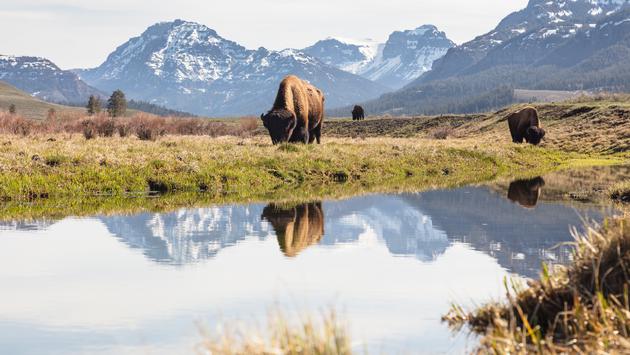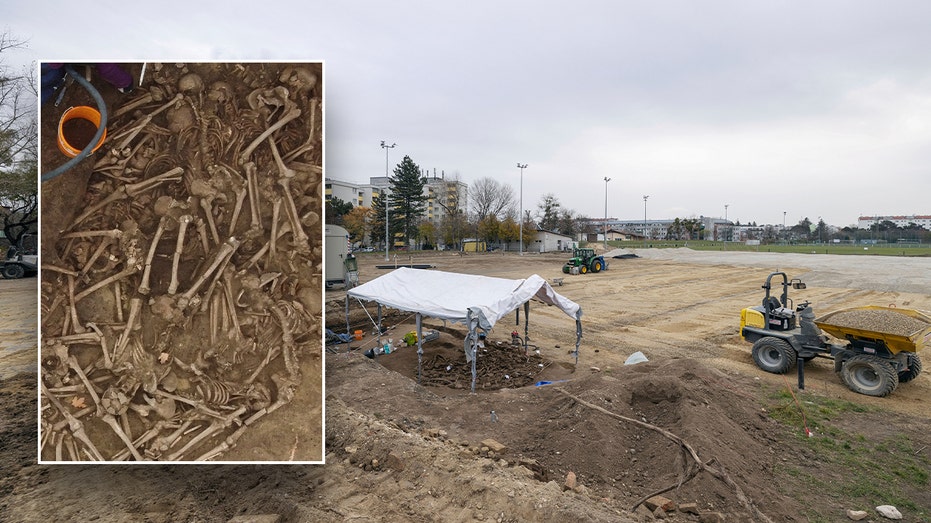- by foxnews
- 08 Apr 2025
Yellowstone National Park Partially Reopening With Interim Visitor Access Plan
After closing access to the public during a week of record rainfall and devastating floods, Yellowstone National Park will reopen its south loop this week at limited capacity.
- by travelpulse
- 24 Jun 2022
- in travel

Following a week's worth of record rainfall and intense flooding, which destroyed a good deal of critical infrastructure, Yellowstone National Park is set to reopen its south loop to the public this coming Wednesday, June 22.
Park officials were forced to close all entrances into Yellowstone after the unprecedented downpour began on June 12, causing preternatural floods, rockslides and mudslides within the park. The region's engorged waterways also washed-out roads, bridges, railroad tracks, housing and power lines, broke water mains and submerged wells.
On June 15, the torrential Yellowstone River utterly destroyed sections of the North Entrance Road and, due to extensive damages that are still being assessed as the waters recede, the northern portion of the park will remain closed for the foreseeable future. But, there's better news for the south loop, which will open at limited capacity this week.
"At 8 a.m. Wednesday, June 22, Yellowstone National Park will begin allowing visitors to access the south loop of the park," the park said in a statement. "The south loop is accessed from the East (Cody), West (West Yellowstone), and South (Grand Teton/Jackson). Areas accessible include Madison, Old Faithful, Grant Village, Lake Village, Canyon Village and Norris."
To ensure the recovering park isn't overwhelmed by visitors, officials are implementing a so-called interim access plan, called the Alternating License Plate System (ALPS).
Essentially, here's how it will work:
- Public vehicles with license plates ending in odd numbers will be allowed to enter on odd days of the month.
- Public vehicles with license plates ending in even numbers (including zero) will be able to enter on even days of the month.
- Personalized plates consisting only of alphabetical letters will fall into the "odd" category for entrance purposes.
- Plates containing a mix of letters and numbers, which end with a letter, will still use the last numeric digit for entrance purposes.
On June 13, "extremely hazardous conditions" due to massive rainfall and rapid snowmelt in the area prompted evacuations of the entire park-which includes parts of Montana, Wyoming and Idaho-and the National Guard was called in to assist with water rescues and airlifts. "Historic water levels caused severe damage to roads, water and wastewater systems, power lines, and other critical park infrastructure," the National Park Service (NPS) reported.
Over a single three-day period of last week, Yellowstone National Park received roughly two or three times the amount of rain that's typical for the entire month of June, according to CNN. And, the National Weather Service has said that precipitation across northwestern Wyoming and southern Montana has already exceeded 400 percent of the normal average this month. The National Oceanic and Atmospheric Administration's data showed that, during the event, the Yellowstone River rose to the highest level seen in over a century.
Cam Sholly, Yellowstone National Park Superintendent, said in an update: "We have made tremendous progress in a very short amount of time but have a long way to go. We have an aggressive plan for recovery in the north and resumption of operations in the south."
"We realize there is much challenging work ahead, and we will do everything we can to support the park, partners, concessioners, and gateway communities on the road to recovery," said Chuck Sams, National Park Service Director.
Yellowstone officials said that, although the north loop remains closed until further notice, "park staff have engaged over 1,000 business owners, park partners, commercial operators and residents in surrounding gateway communities to determine how to manage summer visitation."
Yellowstone is encouraging prospective visitors to monitor its website or social media pages for status updates before planning any trips to the park.
For the latest insight on travel around the world, check out this interactive guide.
For the latest travel news, updates and deals, be sure to subscribe to the daily TravelPulse newsletter here.
For more information, visit nps.gov.
- by foxnews
- descember 09, 2016
Ancient settlement reveals remains of 1,800-year-old dog, baffling experts: 'Preserved quite well'
Archaeologists have recently unearthed the remarkably well-preserved remains of a dog from ancient Rome, shedding light on the widespread practice of ritual sacrifice in antiquity.
read more




